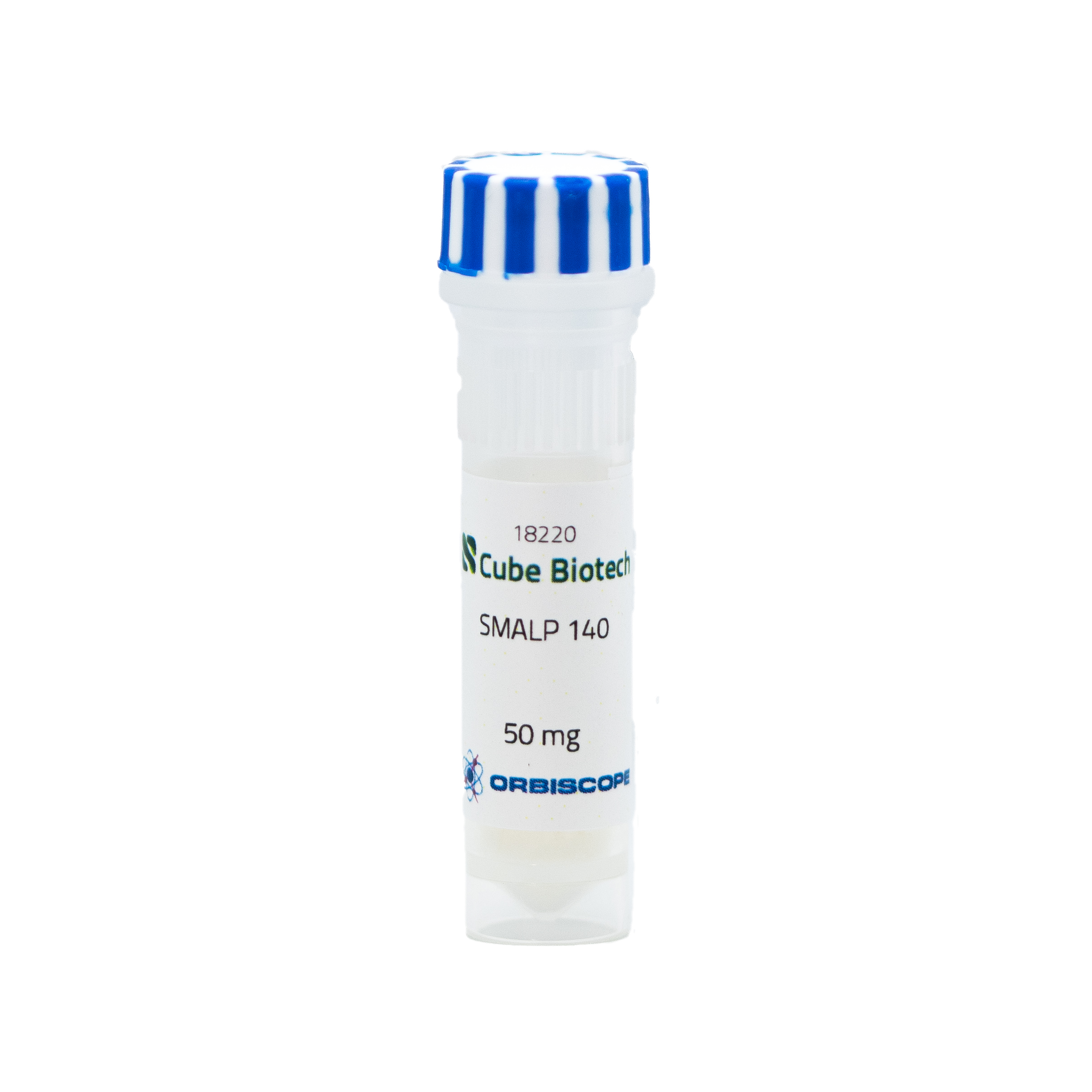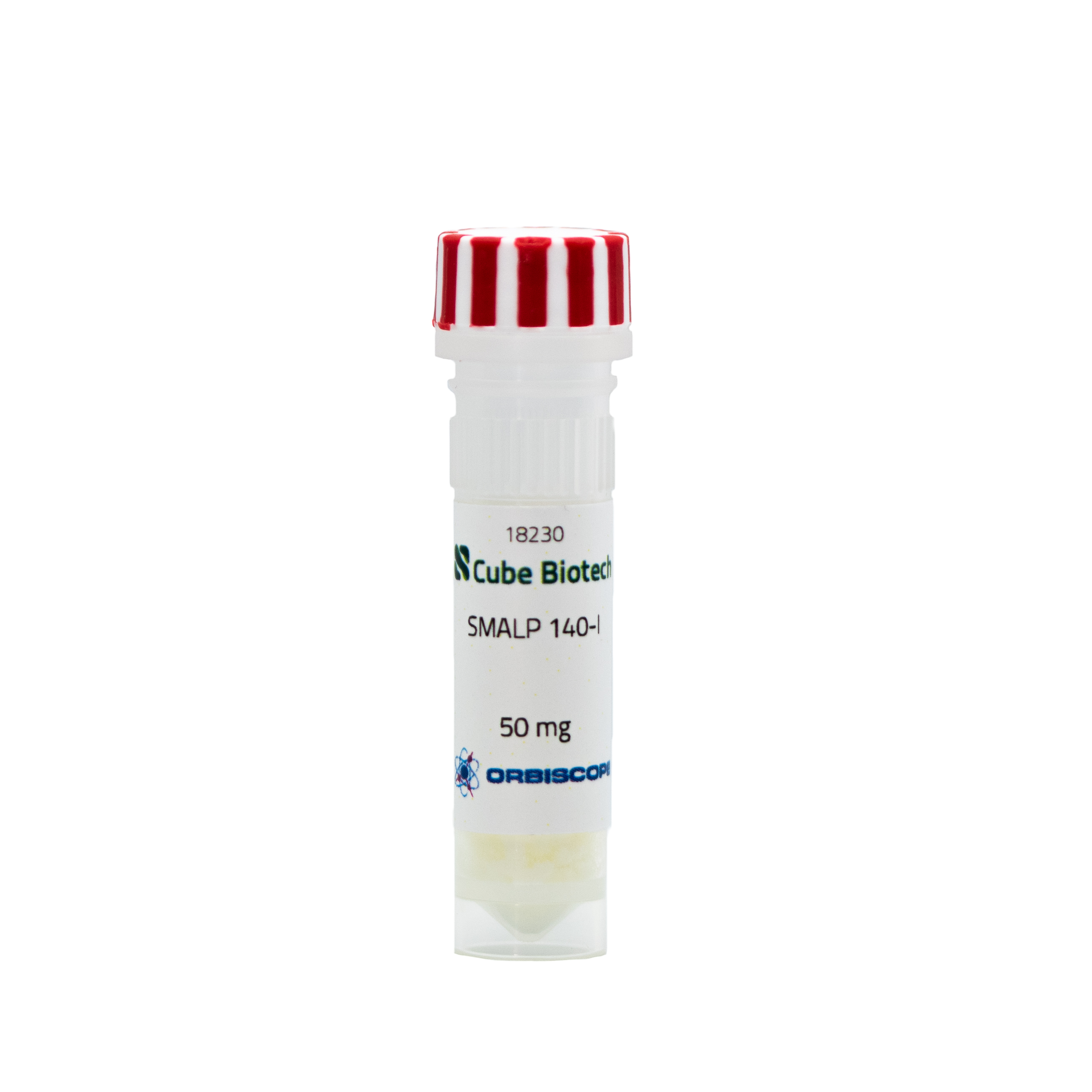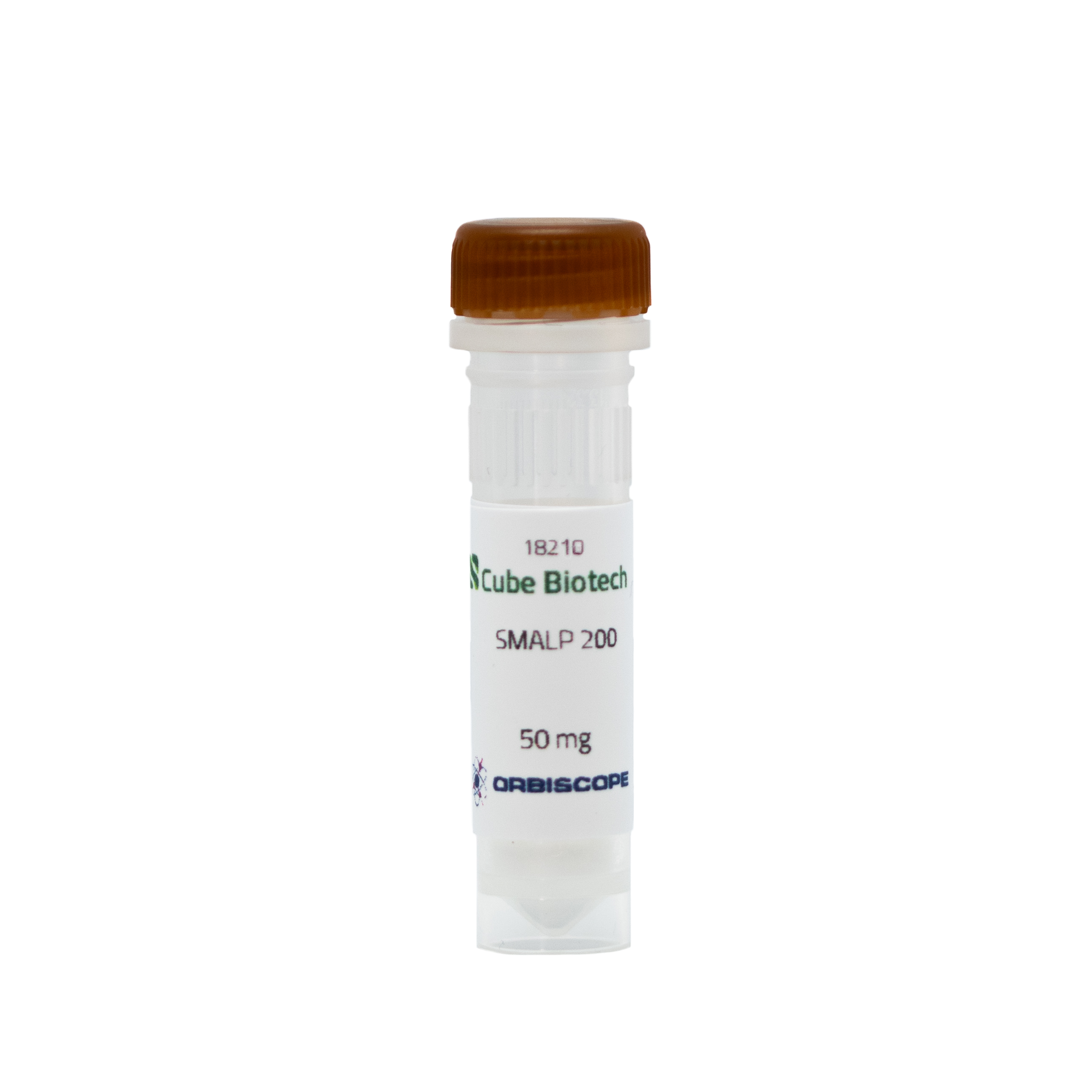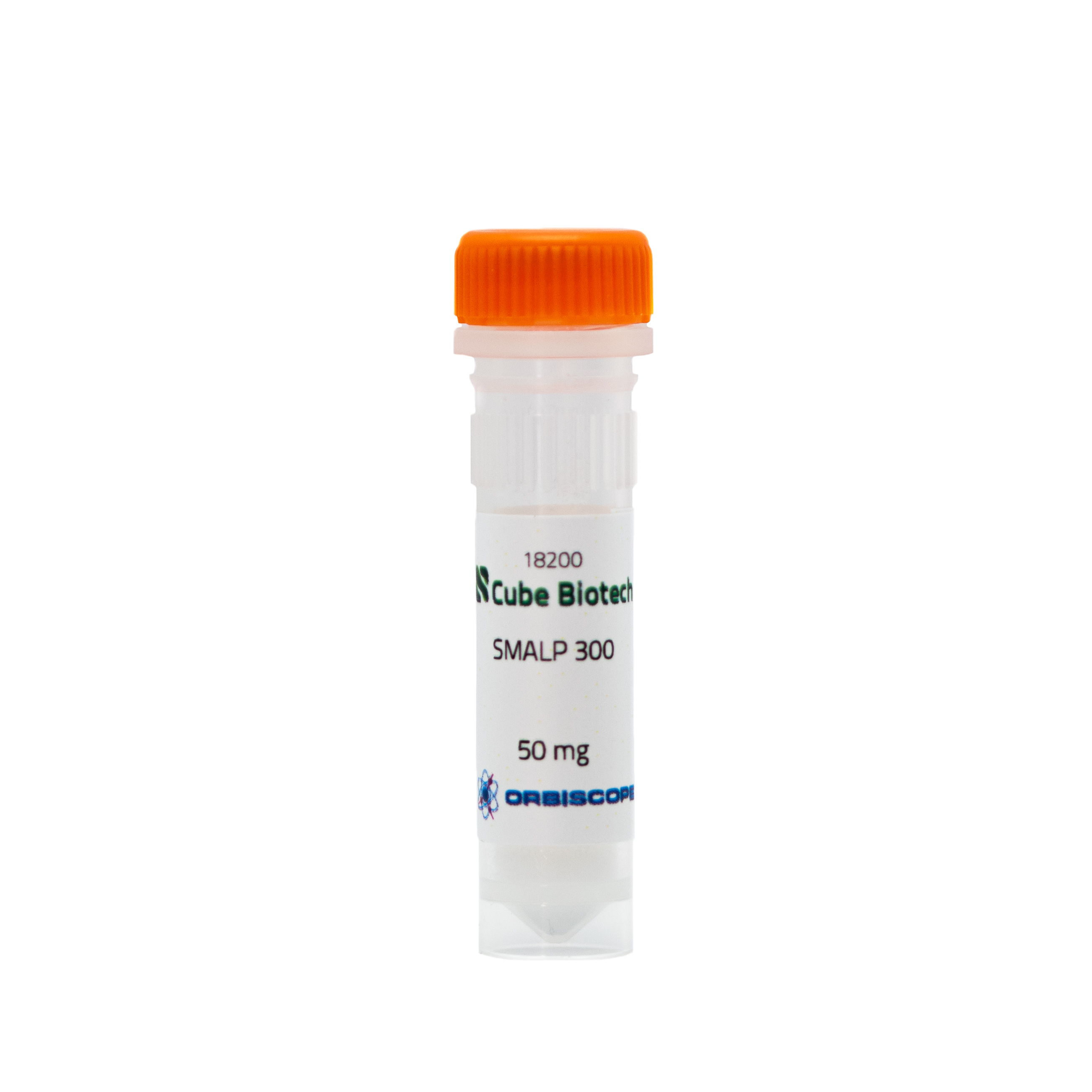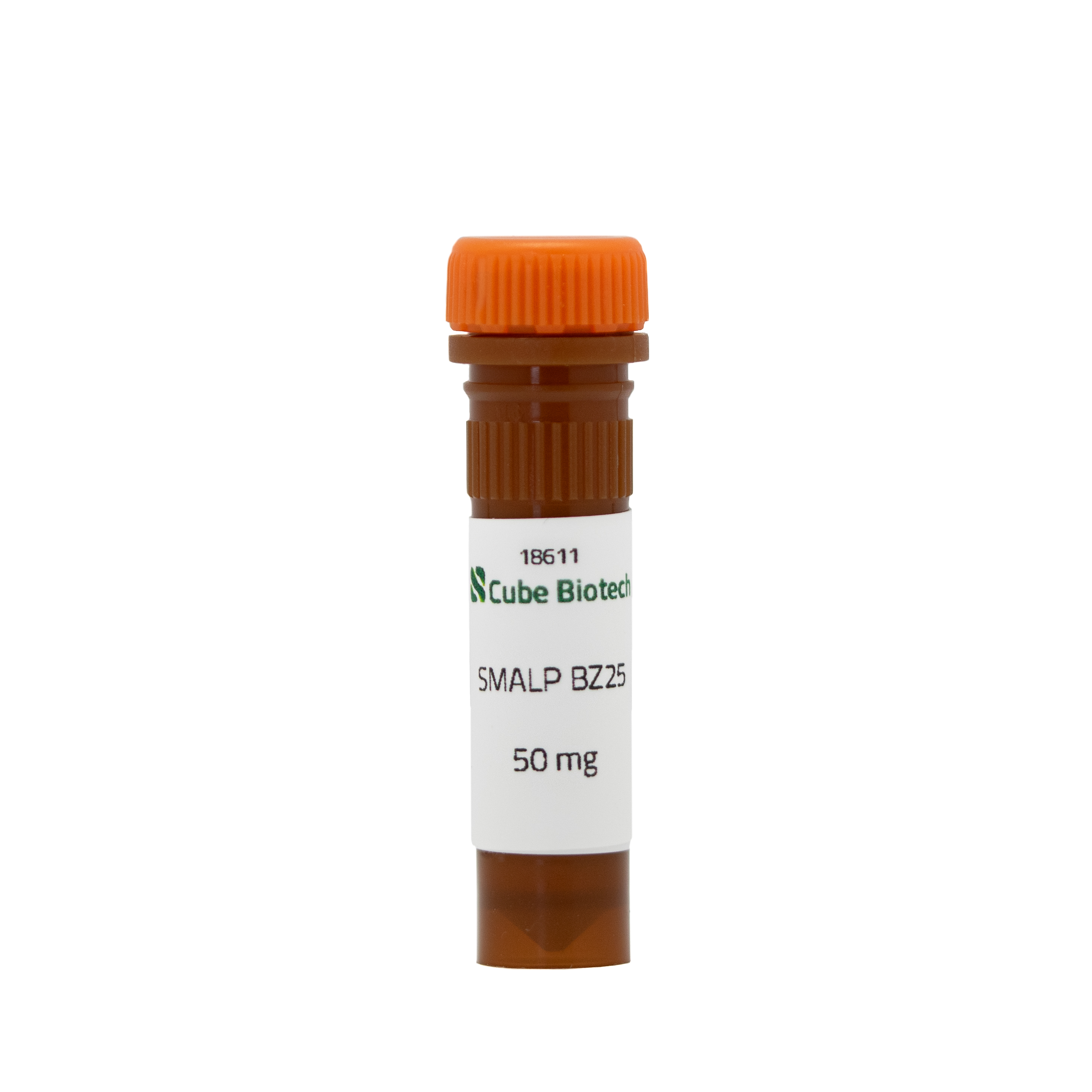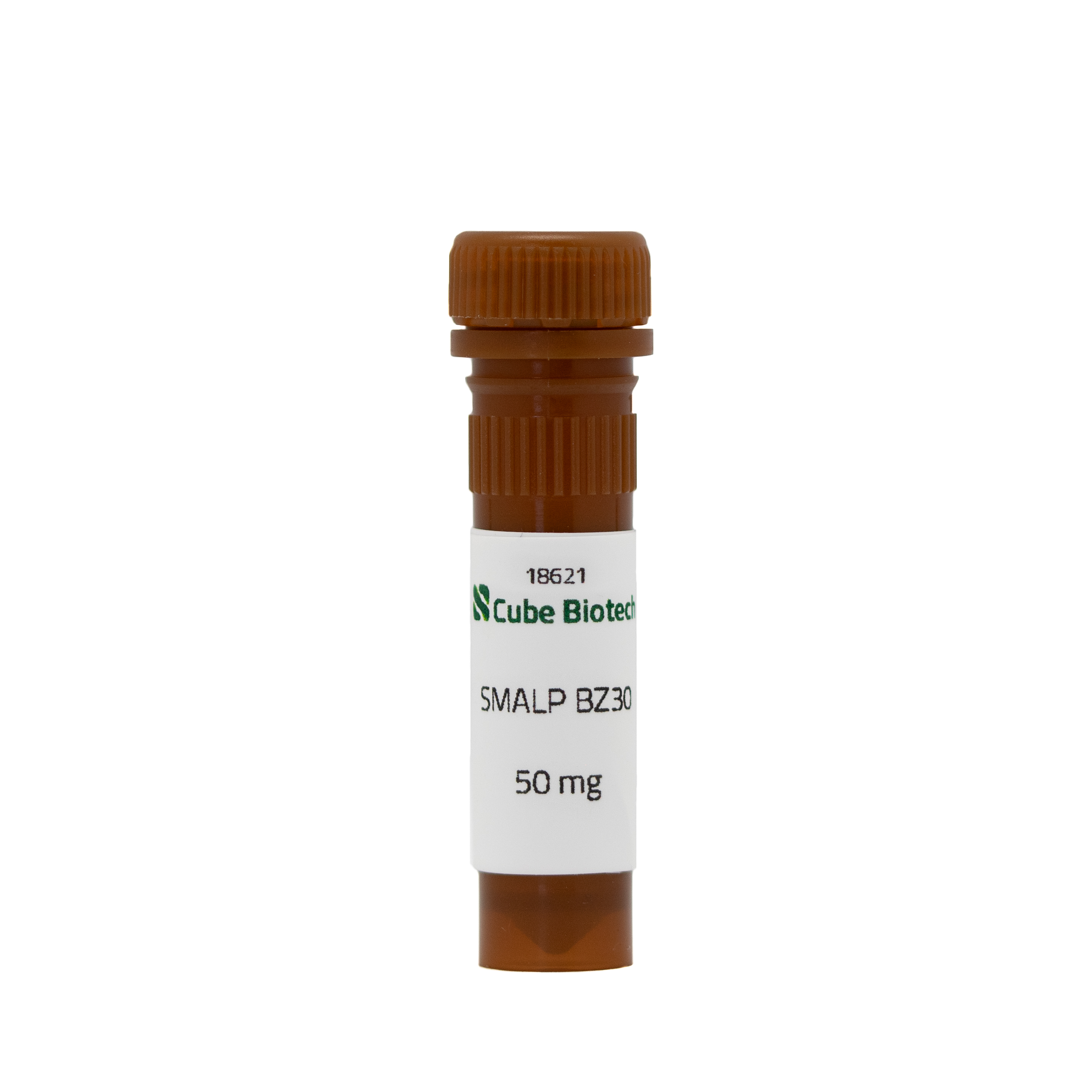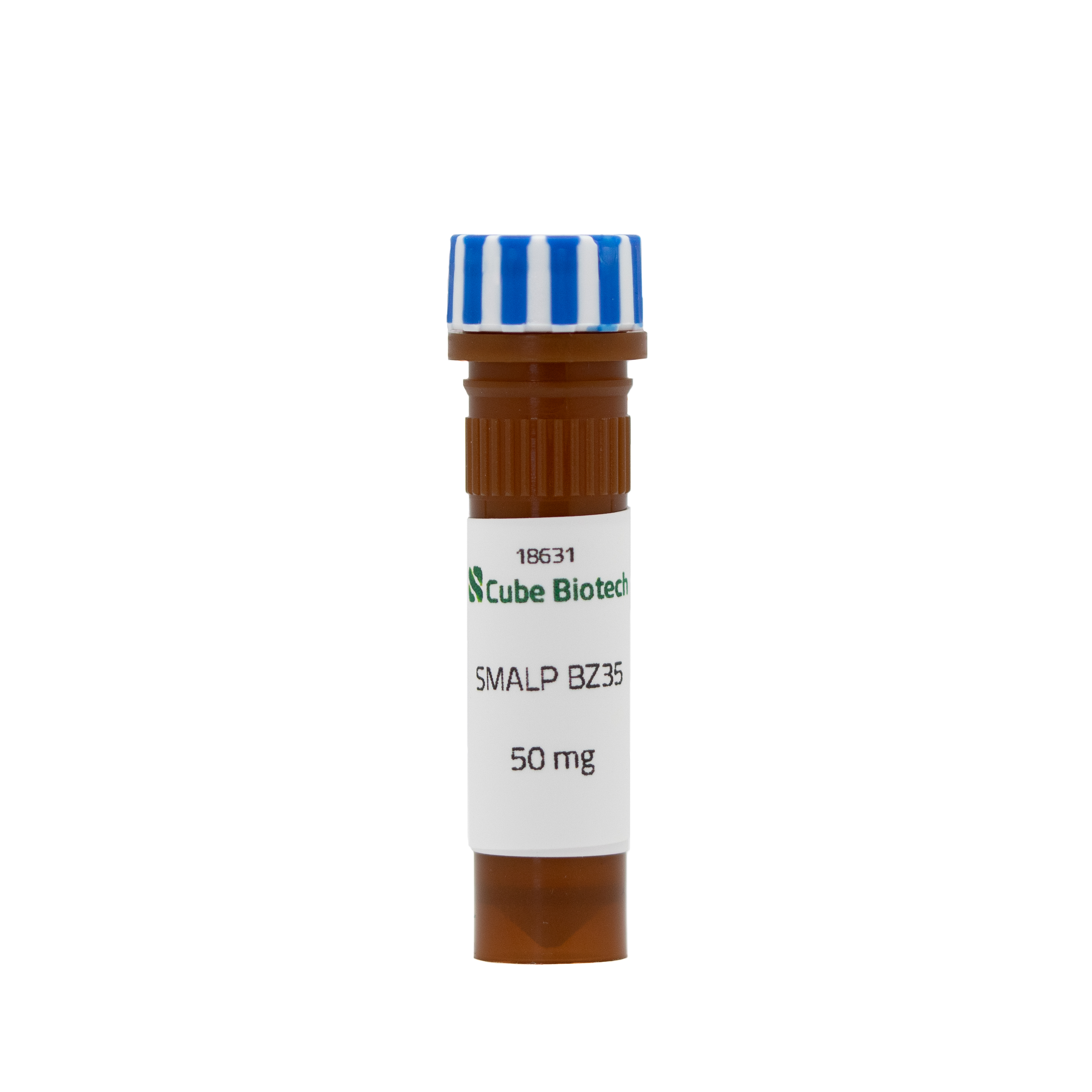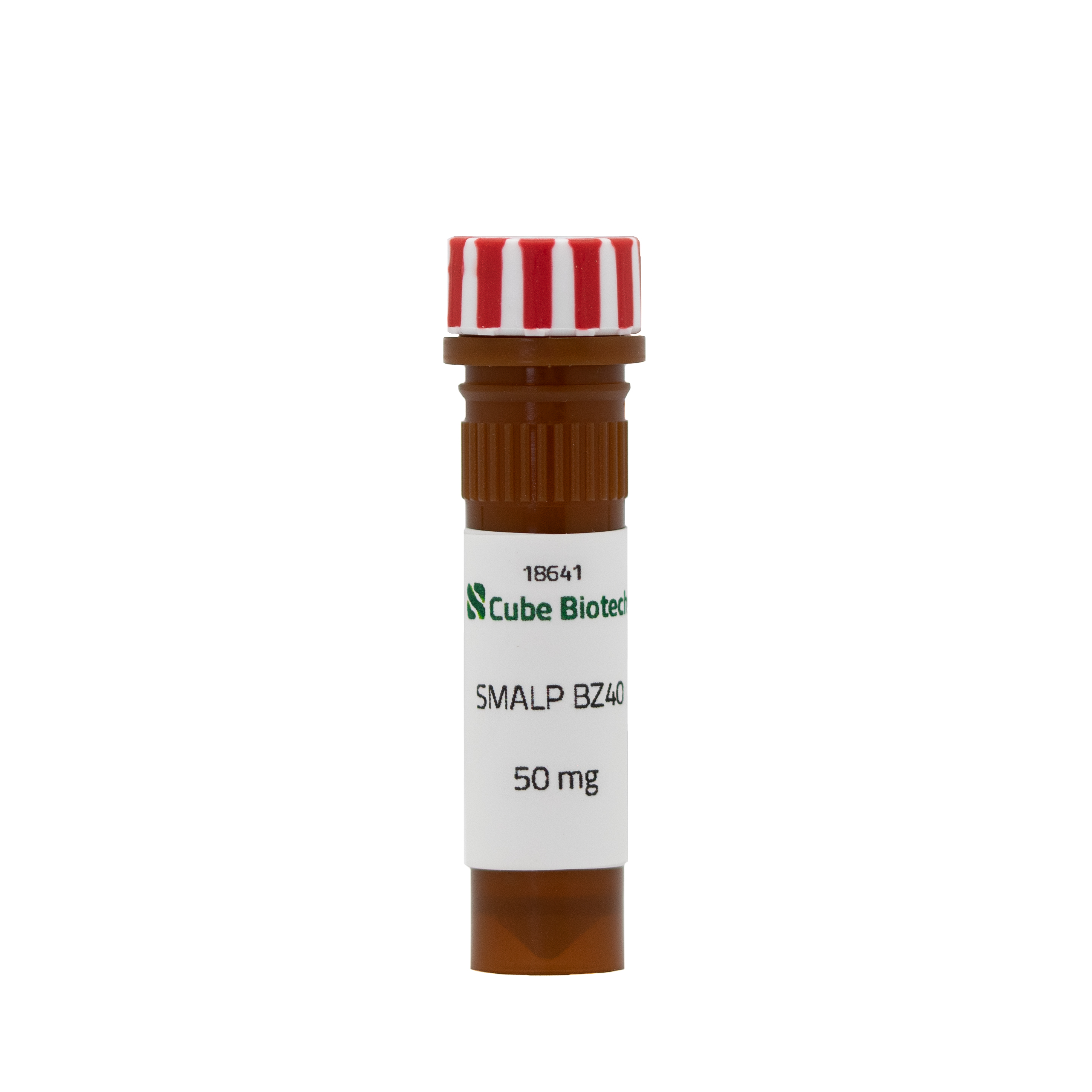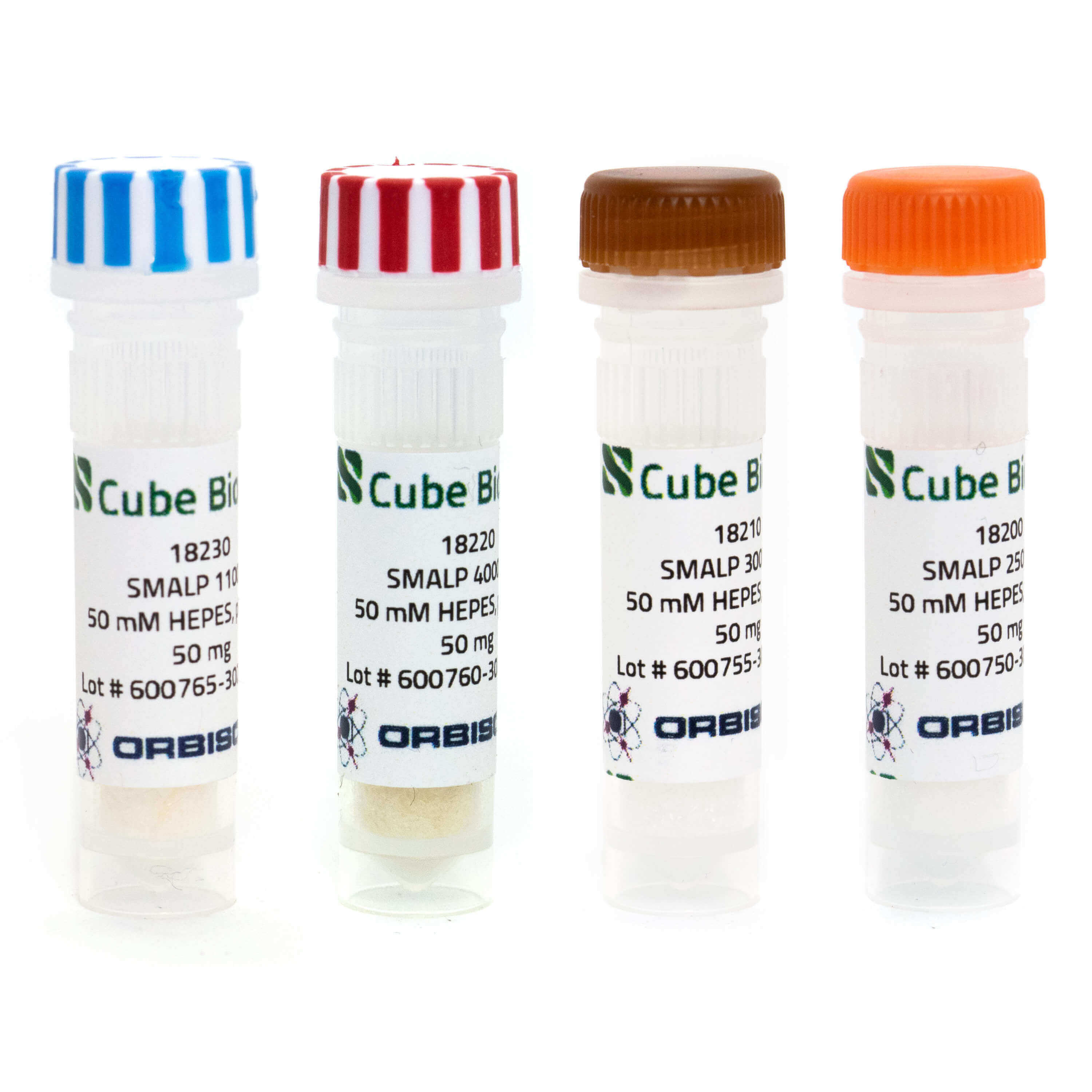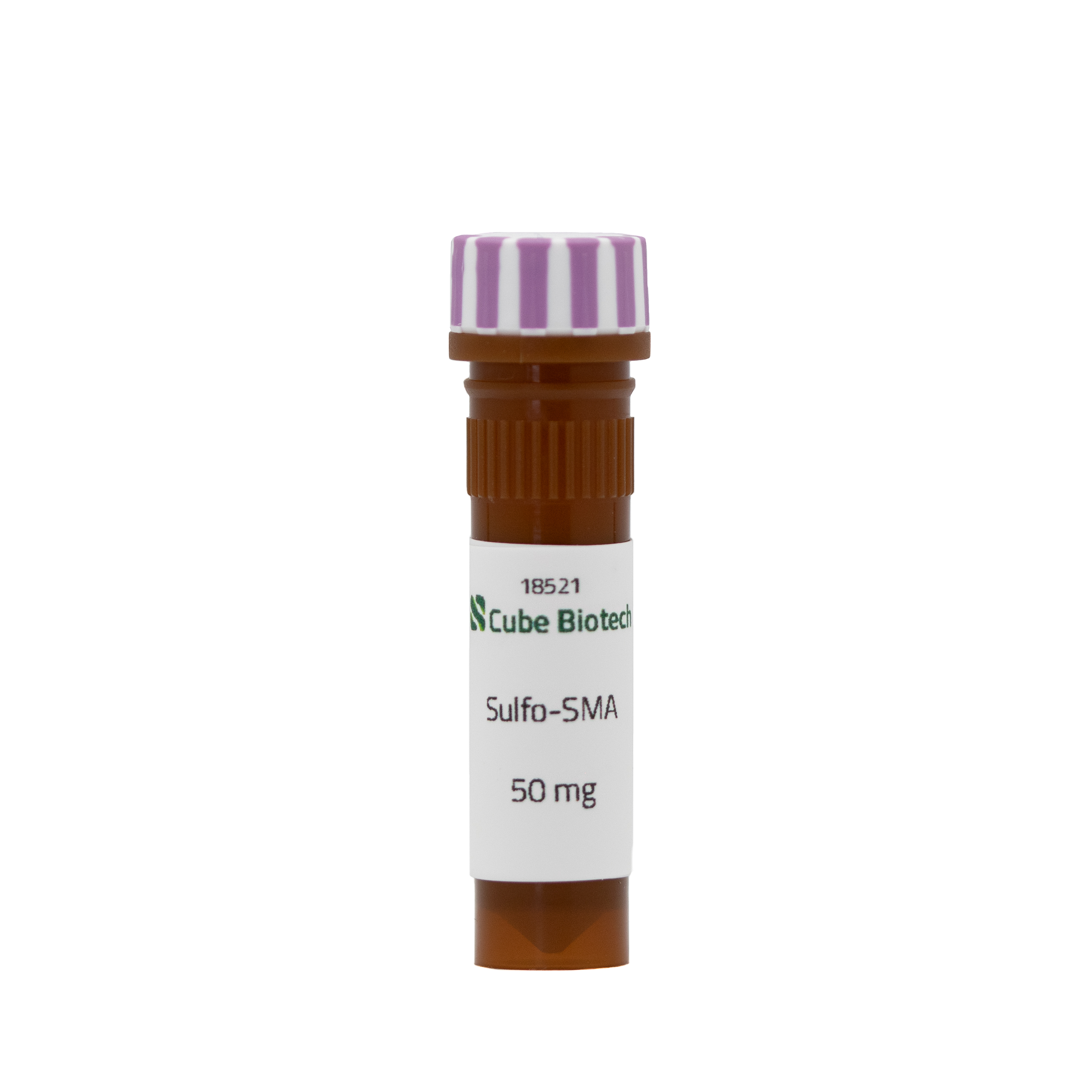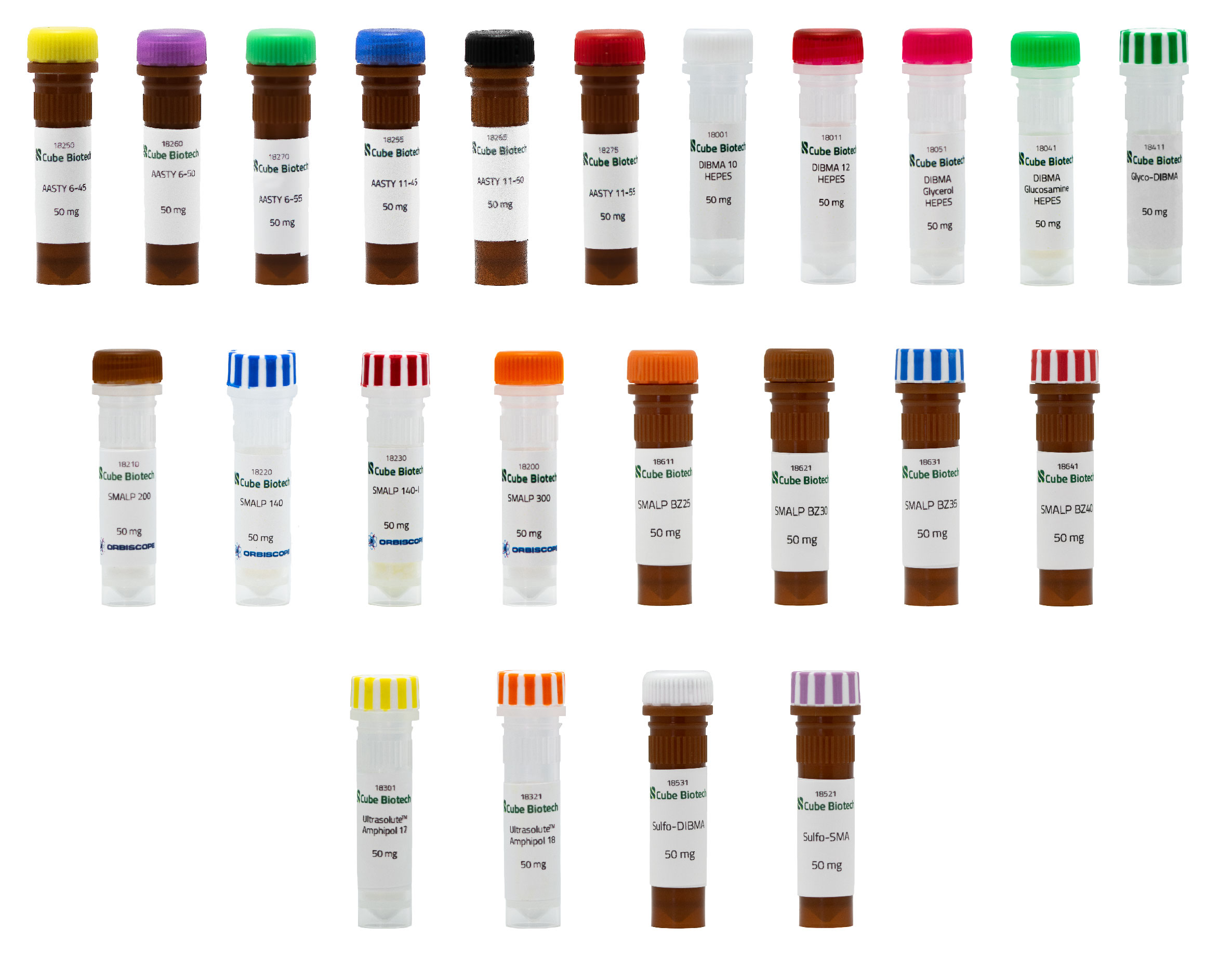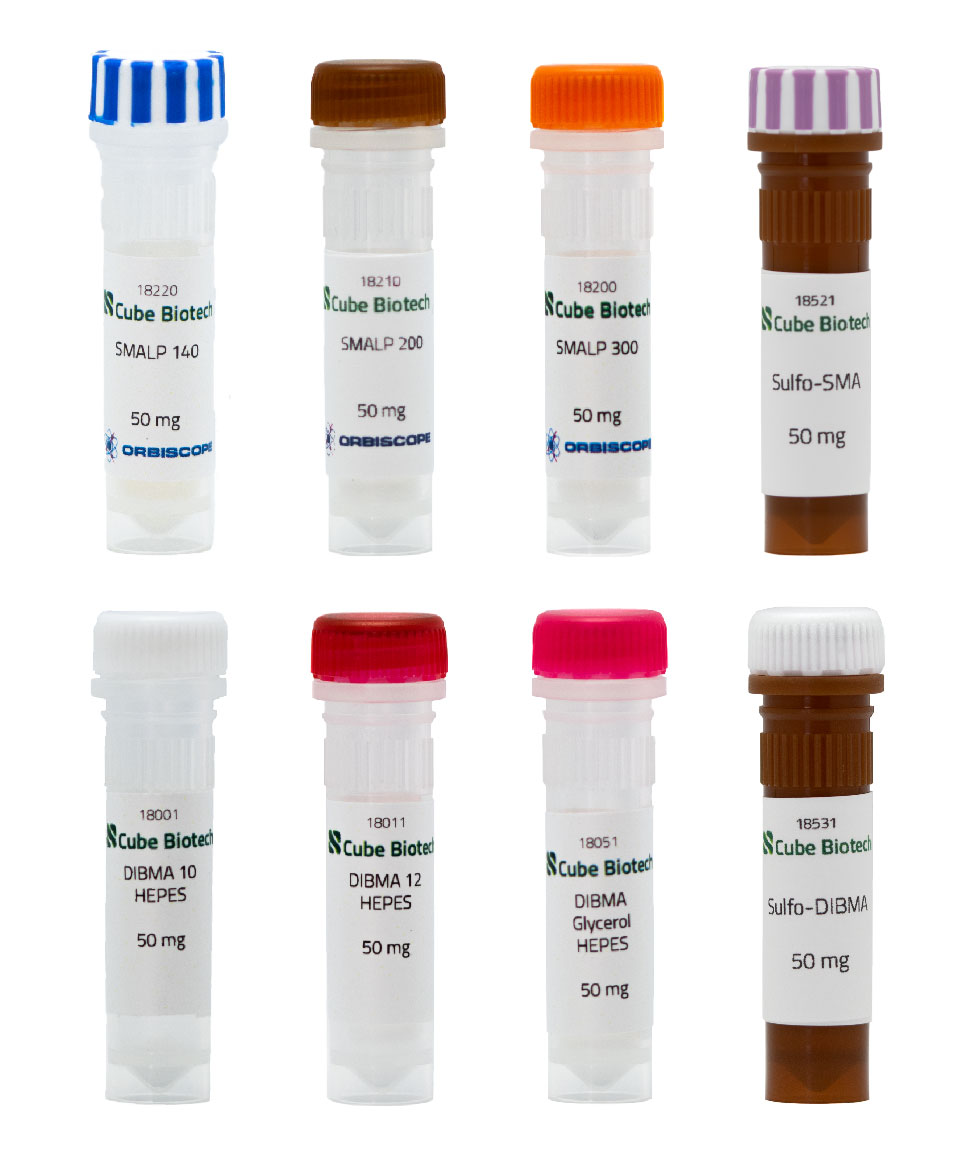SMA
Styrene maleic anhydride (SMA) belongs to a group of synthetic polymers that can form synthetic nanodiscs. These small disc-shaped complexes consist of a polymer, phospholipids of the cell membrane, and a membrane protein. They enable membrane protein stabilization & solubilization without the use of detergents. Another synthetic polymer that can be used for the same reason is DIBMA. Cube Biotech and Orbiscope sell the same polymeric SMA backbone for SMALP. The Orbiscope product is a twenty percent solid content SMALP viscous solution in water, while our products are easy to handle powders.



